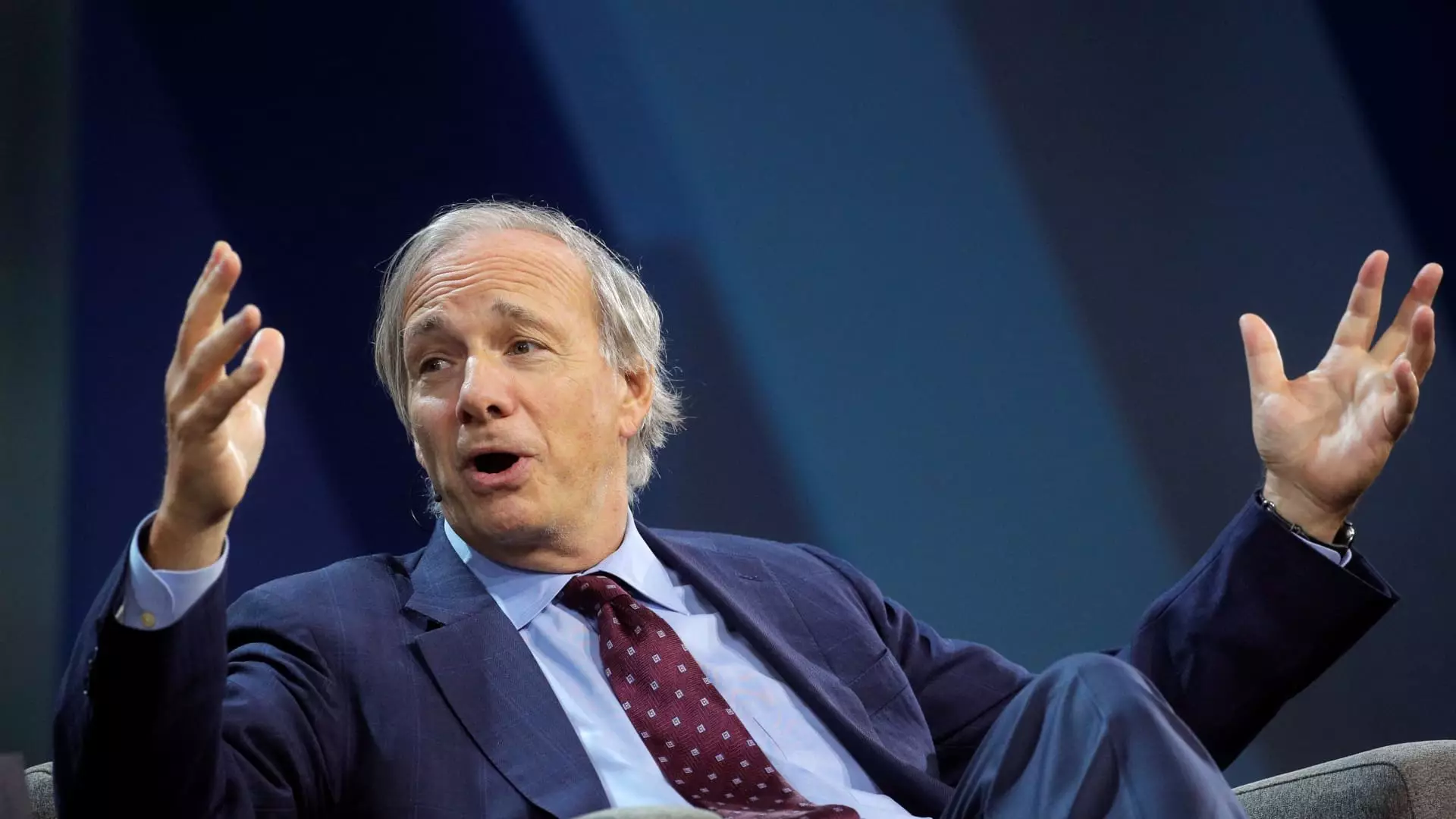The recent decision by the U.S. Federal Reserve to cut interest rates signals a pivotal moment in the country’s monetary policy landscape. Following a period marked by unprecedented economic turbulence due to the Covid-19 pandemic, the Fed reduced the federal funds rate by 50 basis points, bringing it to a range of 4.75% to 5%. This move aims not only to stimulate economic growth but also to ease the financial burden on various sectors reliant on credit, such as mortgages, auto loans, and consumer spending. However, this decision comes amid grave concerns regarding the massive debt incurred by both individuals and government entities. As billionaire investor Ray Dalio aptly pointed out, the U.S. economy is grappling with an immense debt crisis that could have severe implications for its future.
Dalio highlighted alarming statistics regarding national debt, pointing out that the U.S. Treasury has incurred over $1 trillion in interest payments in just one year for a staggering $35.3 trillion national debt. Compounded by a burgeoning budget deficit nearing $2 trillion, the financial landscape is increasingly precarious. For the casual observer, the thought of paying off such gigantic figures may seem abstract; however, the reality is far more pressing. The U.S. government’s choice to engage in substantial borrowing during the pandemic to fund stimulus measures has created a significant debt burden, one that Dalio emphasizes is unprecedented in his lifetime.
The consequential pressure on the economy is not to be underestimated. As debt levels soar, the necessity for rolling over existing debt increases, demanding an ongoing cycle of borrowing. This puts the economy in a delicate situation where interest rates must be managed judiciously; high enough to protect creditors but low enough to avoid plunging debtors into despair.
Dalio’s insights resonate deeply in an economic climate characterized by competing pressures. The Federal Reserve’s challenge lies in this balancing act—a situation where maintaining high-interest rates can protect lenders from potential losses while simultaneously making debt unmanageable for borrowers. This dichotomy creates a potential pathway to economic instability. Indeed, as Dalio noted, neither political party seems inclined to prioritize debt sustainability. This exacerbates existing pressures, leading to the question: What will become of the economy as debt mounts and interest rates fluctuate?
Moreover, looking towards the future, the notion of monetizing debts looms ominously. Dalio warns that the U.S. may follow a trajectory akin to Japan, which has maintained historically low interest rates that significantly impacted the value of its national debt and currency. The risk here is twofold: as the value of debt depreciates, investors may perceive increasingly diminished returns, leading to a crisis of confidence in government bonds. Debt monetization could result in a reduced trust in currency, leading to widespread inflation, and potentially echoing the economic upheaval of the 1970s or the 1930-1945 period.
As markets respond to shifting economic conditions, the implications of declining bond values and rising inflation must be carefully examined. Dalio’s perspective suggests that intervention from the Fed may become a necessity if the markets lack buyers willing to absorb the growing debt supply. Such intervention could be problematic, as it would signal significant instability in the underlying financial environment. The Fed, rather than being seen as a stabilizing force, could become a source of economic tension, drawing parallels to historically tumultuous periods.
The broader implications of this scenario are profound. If debt becomes unmanageable within a fiat currency framework, it raises a crucial question regarding the sustainability of the monetary system itself. With global inflation rates soaring and central banks across the world exploring unorthodox monetary policies, the potential for widespread currency devaluation exists. In such a context, the prudent investor must remain cautious, mindful of historical trends, and aware of the increasing likelihood of economic volatility.
As the U.S. navigates the complexities of reducing interest rates while managing an overwhelming debt load, the lessons from history are relevant. Dalio’s warnings should serve as a clarion call to policymakers and investors alike. The current economic landscape demands a nuanced understanding of the interplay between interest rates, debt levels, and intrinsic market stability. As all eyes turn to the future, the ability to maintain a balanced approach to monetary policy will ultimately determine the health of the economy in the years to come. Understanding these dynamics is essential not only for economic recovery but also for ensuring long-term resiliency against the forces of inflation and national debt.

